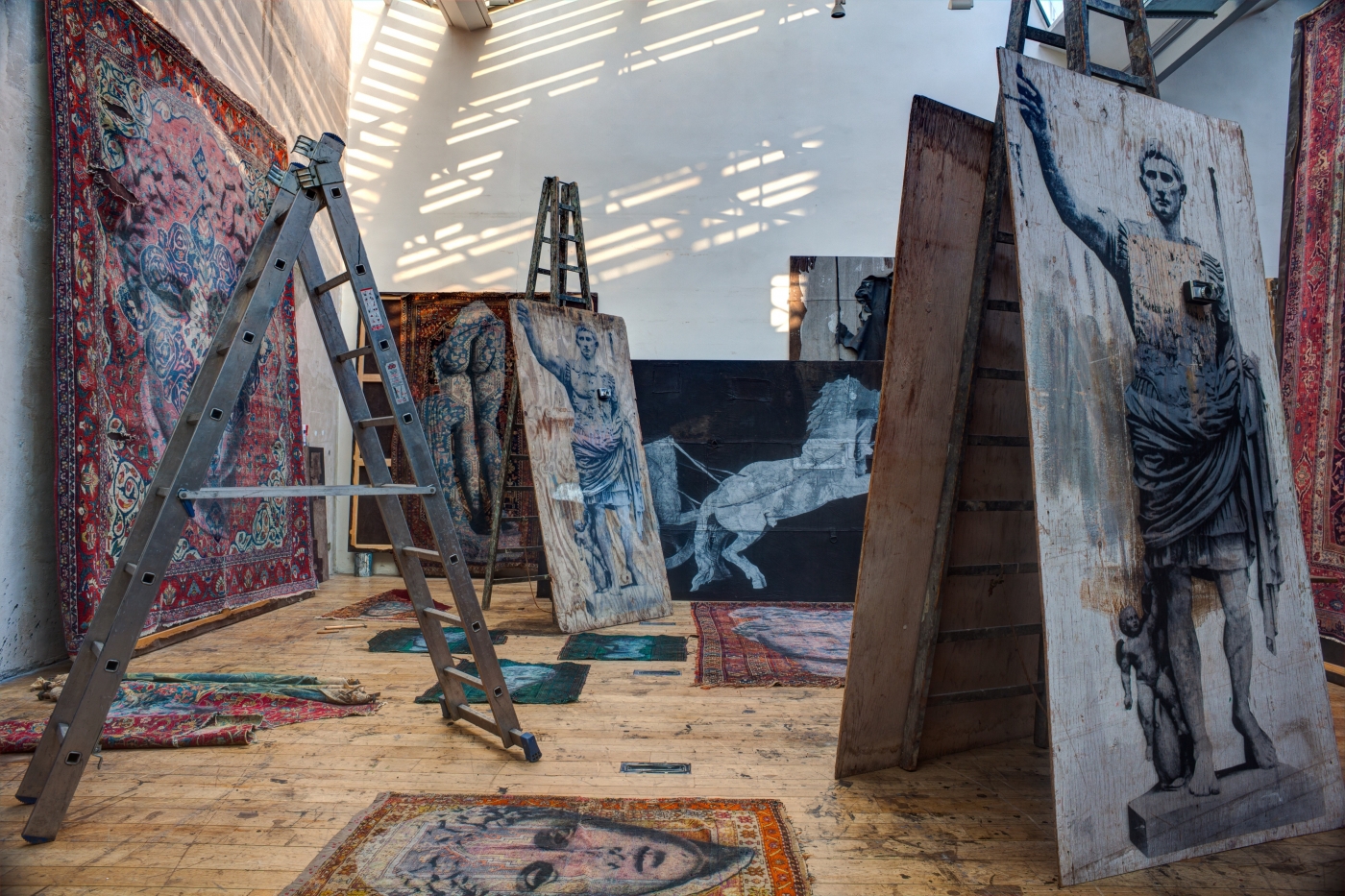Luca Pignatelli is an Italian painter born in 1962 in Milan, where he currently lives and works in a home studio self-designed from a former industrial building.
Throughout the years, Pignatelli has truly established an iconic status in Italian contemporary art, exhibiting in some of the most important art institutions both in Italy and worldwide.
Son of an artist, in 1981 he enrolled in the Faculty of Architecture at the Polytechnic of Milan, where he attended courses on architectural composition, influenced at the time by the insights of Aldo Rossi and by the notion of the sedimentary growth of history, which then assumed for Pignatelli a particular significance in relation to painting, connected with research into time and memory.
The artist is known in Italy and throughout the world for his own process of gathering, custody and iconographic editing of history and art. In fact, over the course of three decades, he has amassed a heterogeneous archive of collective and universal images, portraying ancient and modern artefacts and
figurative signs that document ancient civilizations and industrial progress, defined by art criticism as “theatre
of memory”.

Luca Pignatelli is an Italian painter born in 1962 in Milan, where he currently lives and works in a home studio self-designed from a former industrial building.
Throughout the years, Pignatelli has truly established an iconic status in Italian contemporary art, exhibiting in some of the most important art institutions both in Italy and worldwide.
Son of an artist, in 1981 he enrolled in the Faculty of Architecture at the Polytechnic of Milan, where he attended courses on architectural composition, influenced at the time by the insights of Aldo Rossi and by the notion of the sedimentary growth of history, which then assumed for Pignatelli a particular significance in relation to painting, connected with research into time and memory.
The artist is known in Italy and throughout the world for his own process of gathering, custody and iconographic editing of history and art. In fact, over the course of three decades, he has amassed a heterogeneous archive of collective and universal images, portraying ancient and modern artefacts and
figurative signs that document ancient civilizations and industrial progress, defined by art criticism as “theatre
of memory”.
Contatti
info@officinebit.ch